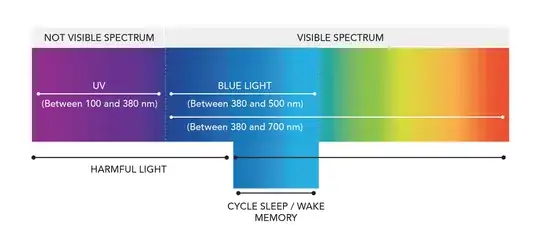Blue, but darker
Earth's sky is blue due to Rayleigh Scattering. Rayleigh scattering redirects at an angle a percentage of incident light through a gas. The percentage of light reflected is proportion to $1/\lambda^4$, where lambda is the wavelength. That is, the shorter the wavelength, the more light is reflected. Violet light is most reflected, percentage-wise, but the purple section of the visible spectrum is small. So Blue light is the next most reflected, and since that portion of the visible spectrum is large, the sky is blue.
For your atmosphere, the percentage of oxygen and argon are higher, but he percentage of nitrogen is lower. From Table 1 of Shardanand and Rao, 1977 here is a comparison of scattering cross section (in $10^{-27}\text{ cm}^{-2}$) for various atmospheric gasses at certain wavelengths (on the x-axis, in Angstroms):
Molecule 6328 5145 4880 4579 3638
O2 2.06 4.88 6.50 8.39 20.03
N2 2.24 5.61 7.26 10.38 23.82
Ar 2.08 5.46 7.24 10.13 23.00
CO2 7.28 17.25 23.00 29.60 70.70
CH4 5.26 12.44 16.59 21.40 51.10
Notice how similar oxygen, nitrogen, and argon are to each other, as compared to carbon dioxide or methane. The relative rate at which the different wavelengths of light are scattered by your atmosphere will be almost the same as on Earth, so the color of the sky will be almost the same as on Earth.
Your star will be putting out light in a spectrum very similar to that of our sun, so the highest magnitude wavelengths will be in the blue range, just as our Sun's are. See here for more details.
The final factor is the mass of the air column. The proportion of light both absorbed by the atmosphere and raleigh scattered is affected by the number of air molecules that a light wave encounters as it travels into the atmosphere. Without you giving a surface gravity, I can't exactly calculate the air column's mass, but from your pressure and density, the mass of the air column is something like 10 times as massive on Earth. Therefore, light will be that much more likely to be absorbed or scattered.
This will make the sky a much darker shade of blue. But note, due to the same emission spectrum of the sun and the same scattering factors, that doesn't mean that the shade of blue is changed, just the brightness of the blue. The blue color will be the same shade, but darker.
